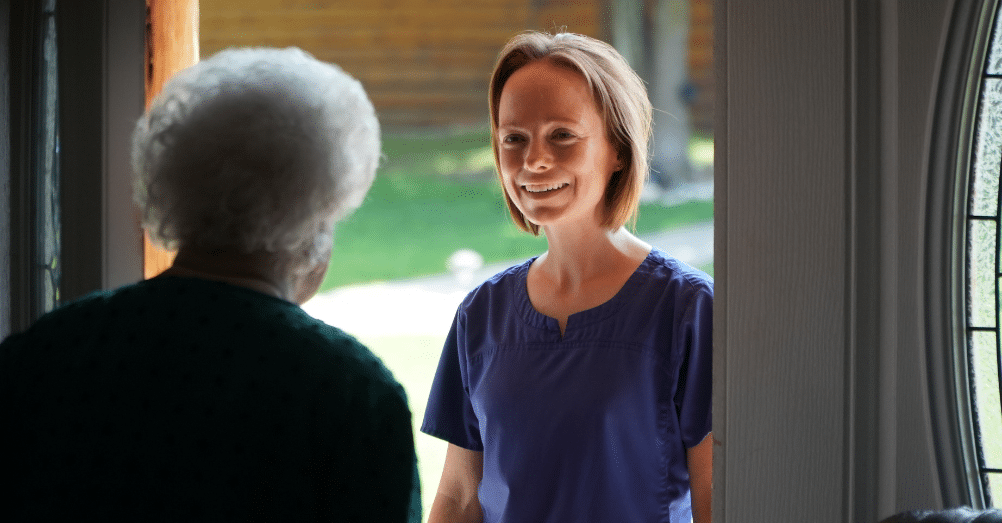In their simplest form, the benefits of home care can be summed up as convenience, transparency, and one-on-one support for patients. Tablet computers support all of these advantages by building digital bridges between practitioners, caregivers, and patients.
During an at-home visit, caregivers can use tablets to bring patients into the loop, pulling up test results, scans, recommendations from healthcare specialists, and more. This easy-access format makes each interaction more efficient without sacrificing an ounce of care – if anything, tablets can leave clients feeling more involved than ever in their health journeys.
What’s more, tablets are incredibly sleek and lightweight, presenting a convenient alternative to lugging around a heavy laptop or file folders bursting with documents. With so much upside to be enjoyed, it’s no wonder that 49% of companies from a recent home care industry survey believe that tablet-based communication will be crucial moving forward.
Improved Communication Between Caregivers & Patients
Tablets are the gateway to virtual visits, remote monitoring, and quick access to information on both the patient and caregiver side of home care. A recent study revealed that remote monitoring increased patient satisfaction rates with communication to 95%, alongside many promising improvements in patient health (including a reduction in disease markets and symptom severity).
Virtual Visits
Technology in home care has been revolutionized for increased accessibility, with telehealth playing a starring role. Tablet computers enable virtual visits with ease, allowing caregivers to monitor patients’ progress from a distance and giving patients a channel to ask questions and receive education.
On the agency side, remote appointments go a long way towards achieving cost-efficiency: same quality of care, no expenditure on gas, travel time, and other related expenses. Offering remote care options also opens agencies up to a much wider service area, connecting patients across the country to the specialists they need.
Easy Access to Both Patients & Caregivers
It’s not always easy for patients to get ahold of healthcare staff, and caregivers can only do so much when in-person visits are their only touchpoint with clients. Tablets significantly enhance communication by facilitating video calls and messaging in real-time, allowing for better care coordination and a more productive relationship.
Video chat gives caregivers a window into patients’ non-verbal cues so they can respond more effectively to their needs. Meanwhile, instant messaging is a forum for quick information exchanges, such as medication reminders and appointment confirmations. These platforms also provide opportunities for education, such as guiding patients through exercises or medication administration.
Real-Time Access to Electronic Health Records (EHR)
Electronic Health Records (EHR) are a digital version of a patient’s medical history. They can either be stored on the cloud, locally on different devices, or both, enabling quick and easy remote access. From prescription records to test results, tablets put essential client information at caregivers’ fingertips.
By eliminating the need for repetitive paperwork and enabling better coordination between health teams, EHR saves time and reduces workload in one fell swoop. Tablets can also improve the accuracy and completeness of documentation, giving caregivers the tools to update patient information on the spot.
Growing Role of Remote Patient Monitoring (RPM)
More than half of respondents from the above-mentioned home care industry survey believe remote patient monitoring will have an impact on the future of our industry. And tablets are one of the simplest tools for enabling this emerging service.
Assistive Features
Many patients who require in-home care are living with some form of disability, and tablets have many accessibility features to accommodate various needs. Features like enlarged lettering, high-contrast modes, and screen readers make content accessible for visually impaired individuals, and patients with hearing difficulties can enable subtitles and captions during video calls. Adjustable touch sensitivity and voice recognition can also help clients with mobility issues interact more comfortably with their digital device
The Future of Technology in Home Care
Tablets are just one of many tools that are defining the tech revolution in home care. RPM, which we mentioned above, also relies on smart sensors and wearable devices to collect patients’ health information. That data is then sent straight to their respective health care teams, enabling greater responsiveness and even a reduction in hospitalizations.
Artificial intelligence is also playing an increasingly important role in treating patients, especially when it comes to preventive care. Algorithms can crunch large amounts of data to identify trends on both an individual and collective level. It can then use its findings to predict future trends, optimize care plans, and apply what’s worked well (or not so well) in the past to future medical decisions.
Future-Proof Your Non-Medical In-Home Care with AxisCare
A successful digital transformation starts with the right software. AxisCare is designed to facilitate and simplify every aspect of the home care delivery process, from scheduling and billing to payment processing and reporting. Our platform was also created with mobile usage in mind; it’s packed with features that make in-home and remote care a breeze, and is broadly compatible with all modern devices.
Request your live demo here.











